Snake plants aren’t exactly known for their flowers, much like Spider-Man’s costumes aren’t really known for their armpit webbing.
But when both are on display – the former as a houseplant, the latter in the panels of comic books – the results are visually interesting, to say the least.
While we have no control over what the folks at Marvel deem aesthetic for Peter Parker’s armpits, we do have the power to encourage mother-in-law’s tongue to bloom.
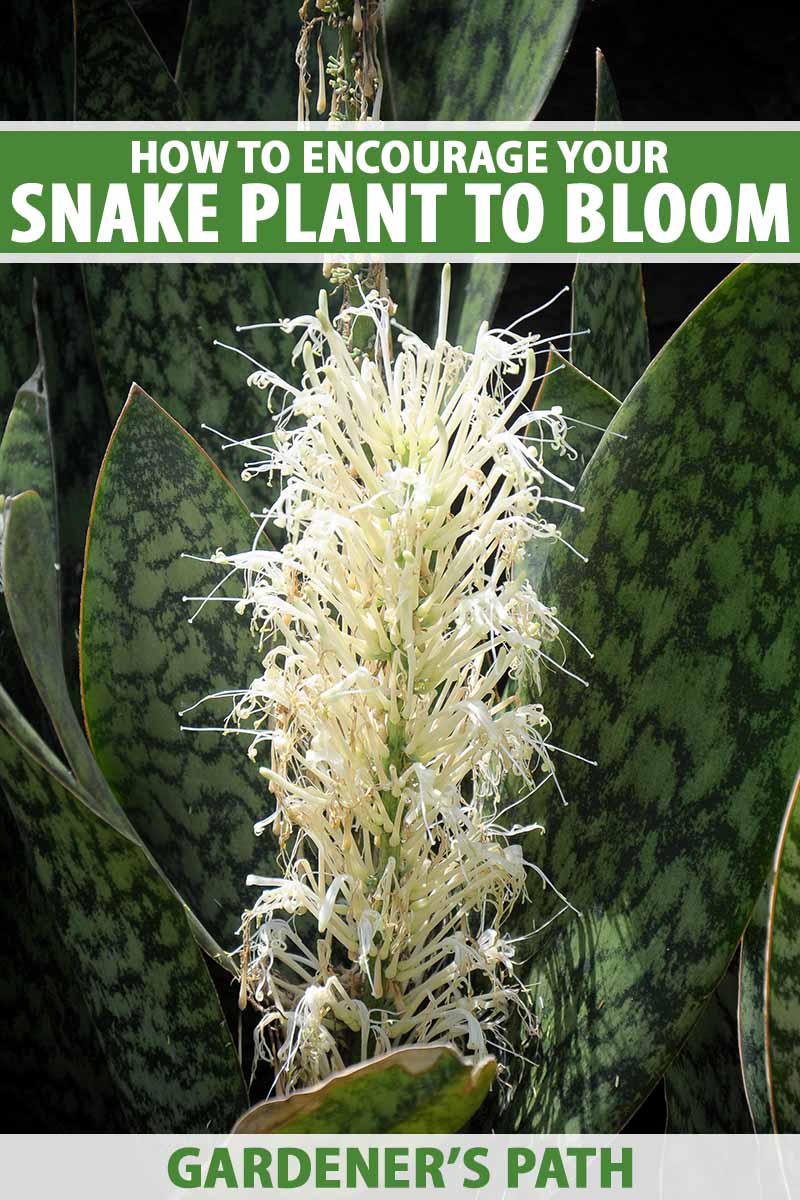
We link to vendors to help you find relevant products. If you buy from one of our links, we may earn a commission.
By altering our cultivation practices and making simple modifications to a snake plant’s growing environment, us gardeners can force these popular houseplants to produce some cool-looking flowers.
Why don’t snake plants bloom readily indoors? How can we force them to flower? What should gardeners do with the flowers afterwards?
All of these questions and more will be answered in this guide.
Here’s everything we’ll cover up ahead:
What You’ll Learn
The Elusive Indoor Flower
Although mother-in-law’s tongue is a quite common houseplant, its blooms are somewhat of a rarity when it is grown indoors.
When they do occur, some types produce flower stalks bearing a raceme of small flowers in creamy white, yellow, pink, or green hues.

Other varieties produce clusters of flowers at the base of the plant. These blooms are closed during the day but open at night, and typically release a sweet, jasmine- or vanilla-like fragrance.
As gardeners, whenever we want to coax a plant into flowering out of season or otherwise developing in a certain way, we have to ask ourselves: “in what conditions would the specimen naturally behave in this way? And how can I best mimic those conditions?”
Formerly known as Sansevieria and reclassified as members of the Dracaena genus, mother-in-law’s tongue hails from regions of Africa and southern Asia, and it’s possible to grow them outdoors as perennials year-round in USDA Hardiness Zones 9 to 12.
Temperatures lower than 50°F will kill them, and any grown outdoors in colder zones will have to be brought inside in order to survive the winter.
Although they’re tolerant of shade – as evidenced by their popularity as low-light houseplants – they actually prefer an abundance of light, which helps them carry out photosynthesis to the degree necessary for flower production.
This explains why most snake plant parents don’t see much in the way of blossoms.

This succulent also utilizes crassulacean acid metabolism (CAM), a process wherein certain flora only open their stomata to exchange gasses at night.
This helps the plant to conserve water, resulting in less of a need for supplemental irrigation than most other plants.
But full sun paired with minimal moisture is ideal for growth.
A faster-growing snake plant quickly becomes root-bound, which signals to the plant that there’s no more room to spread, and it must divert resources to seed production in order to spread to other spots.
Best Cultivars for Blooming
I’m sure all of you snake plant enthusiasts out there have your favorite varieties, but have you ever thought about which ones produce the best blooms?
We’ll go over some top-tier options below, most of which are available from our trusted affiliates online.
But if delivery isn’t fast enough for you to acquire an established specimen, garden centers or nurseries in your area should have a decent selection available as well.
African Bowstring Hemp
Reaching a foot in height at maturity with a narrow profile, African bowstring hemp has mottled light and dark green, straplike leaves that thicken in width towards the middle like an ancient Greek xiphos sword.
When they blossom, the flowers of D. hyacinthoides (syn. S. hyacinthoides) have pale green to white, wispy blooms borne all along a tall central stem in a way that complements the foliage quite nicely.
Black Coral
D. trifasciata (syn. S. trifasciata) ‘Black Coral’ takes a bit of a detour from the typical green, sporting gray, olive green, and even black-hued leaves, if conditions are shady enough.
With a height of up to three feet when fully grown, this cultivar’s creamy white flowers are displayed on long, thin raceme – a floral yang to the foliage’s yin.
‘Black Coral’ is offered in six- or 10-inch pots from Perfect Plants Nursery.
Canaliculata
The most narrow-leafed cultivar on this list, D. canaliculata (syn. S. canaliculata) has foliage that – if I were to ask a wicked fresh dude or dudette from the ‘80s – could be described as “totally tubular,” both figuratively and literally.
Said leaves are a soft green-gray and can reach three feet in length while also spreading out like a fan, which is a bit of a contrast from the standard tight and upright growth habit and flat, straplike leaves that tend to come to mind.
The lavender to pink buds open to reveal fine white flowers on a long raceme which will stand out attractively amidst the splaying leaves.
Laurentii
An oldie but a goodie, D. trifasciata ‘Laurentii’ (syn. S. trifasciata var. laurentii) rocks yellow leaf margins that surround horizontal bands of green and gray on thin, slightly curved foliage.
Amongst the tightly-packed and upright leaves will grow a long stem bearing white buds, which later blossom into white-petaled flowers.
When it comes to houseplants, the basics are tried and true… and ‘Laurentii’ is proof. For those interested, it’s available from Perfect Plants Nursery in a six-inch pot.
How to Coax a Snake Plant to Bloom
You won’t have much luck convincing a juvenile specimen to bloom, and you’ll need to have a mature specimen on hand for the following tips to be effective. Read our growing guide for care and propagation tips.
Have an adult specimen ready and waiting? Great! Let’s begin.
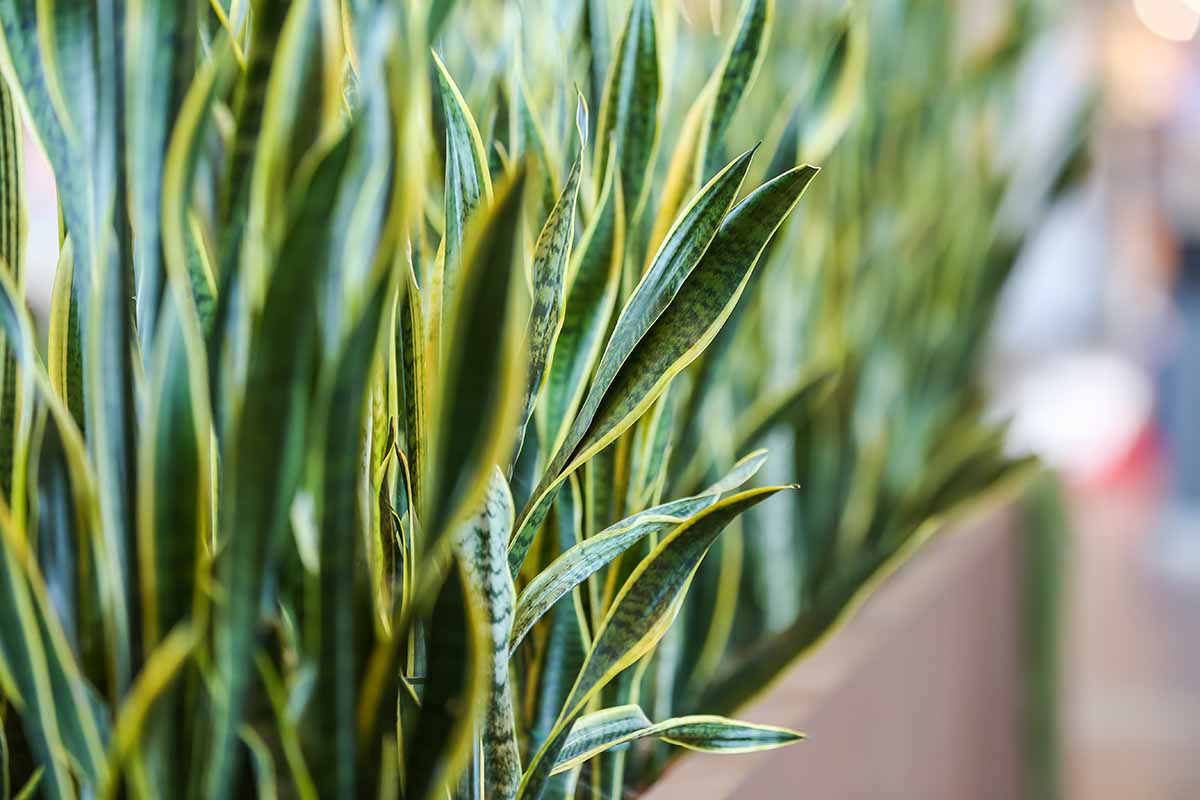
The sun is the fuel for the flowering process, so if blooms are your goal, it’s important to give these plants as much light as they can catch.
For an outdoor mother-in-law’s tongue in Zones suitable for year-round cultivation, or in cooler regions in the summertime, be sure to place it in full sun.
Indoor specimens should be placed near large, south-facing windows in order to snag as much daylight as possible. You can even stick them under grow lights for up to 16 hours of bright exposure per day.
Additionally, snake plants should be put in a place where they’ll eventually become root-bound.
Whether it’s in a snug pot or tightly clumped together with other plantings, a lack of extra room and the subsequent root-bondage will encourage it to focus on procreation rather than physically expanding via vegetative growth.
For outdoor plantings grown in regions north of Zone 9, remember to bring plants back indoors when temperatures drop to 50°F.
Throughout the growing season, only water these succulents when the soil is completely dry. During the wintertime, water them only when the soil becomes so dry that it starts to crack on the surface, and separates from the edges of the pot.
Applying a fertilizer intended for cacti or succulents at a quarter of both the recommended dose and frequency during the growing season should provide enough nutrition for flowering without going overboard.

Two-packs of eight-ounce containers of Miracle Gro liquid succulent fertilizer are available on Amazon.
If all goes to plan, blooms should appear in late winter or early spring. They persist anywhere from a couple weeks to a month, so enjoy them while they last!
Care After Flowering
Congrats! You’ve unlocked the elusive flowers of mother-in-law’s tongue. Now what?
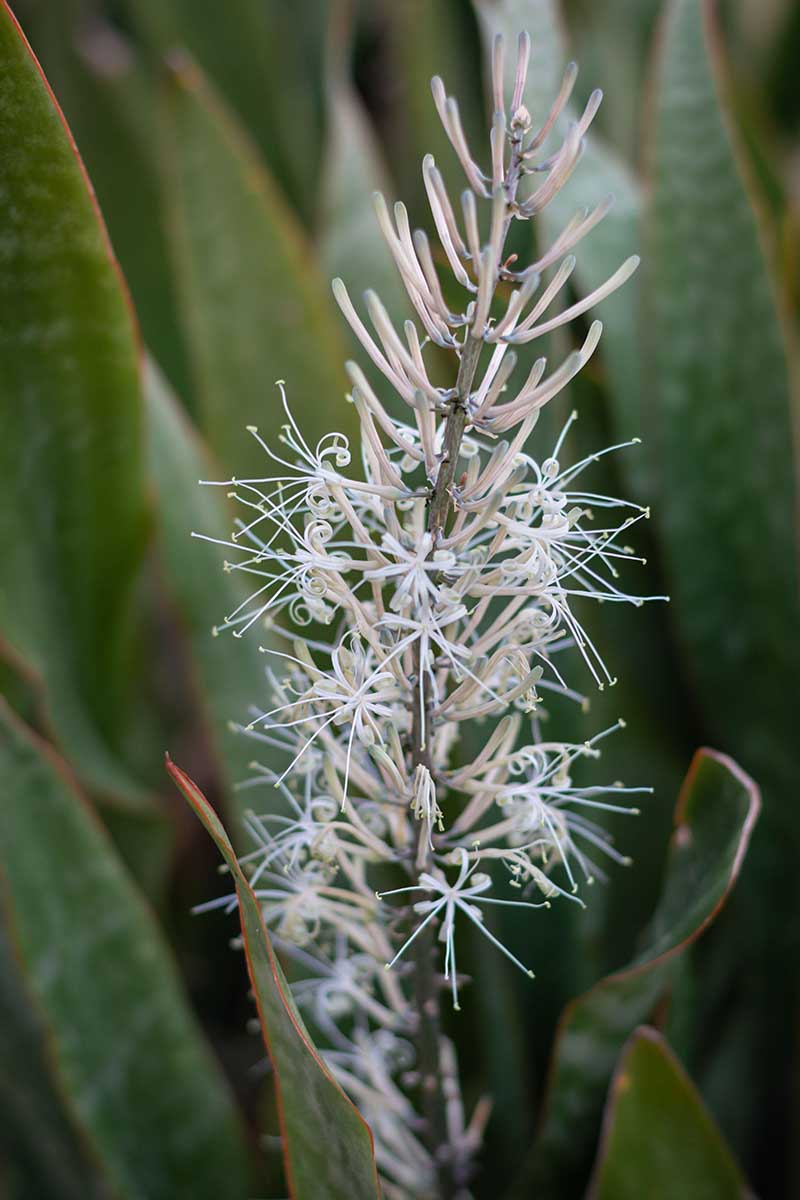
Other than sitting back and enjoying the ornamental fruits of your labor – literally, since the flowers can eventually give way to orange berries if they are pollinated – there are a few things you should do.
The first is to be wary of pests. Now that your snake plants have blossomed, pollinating insects may be attracted to the aroma and nectar produced by the blooms.
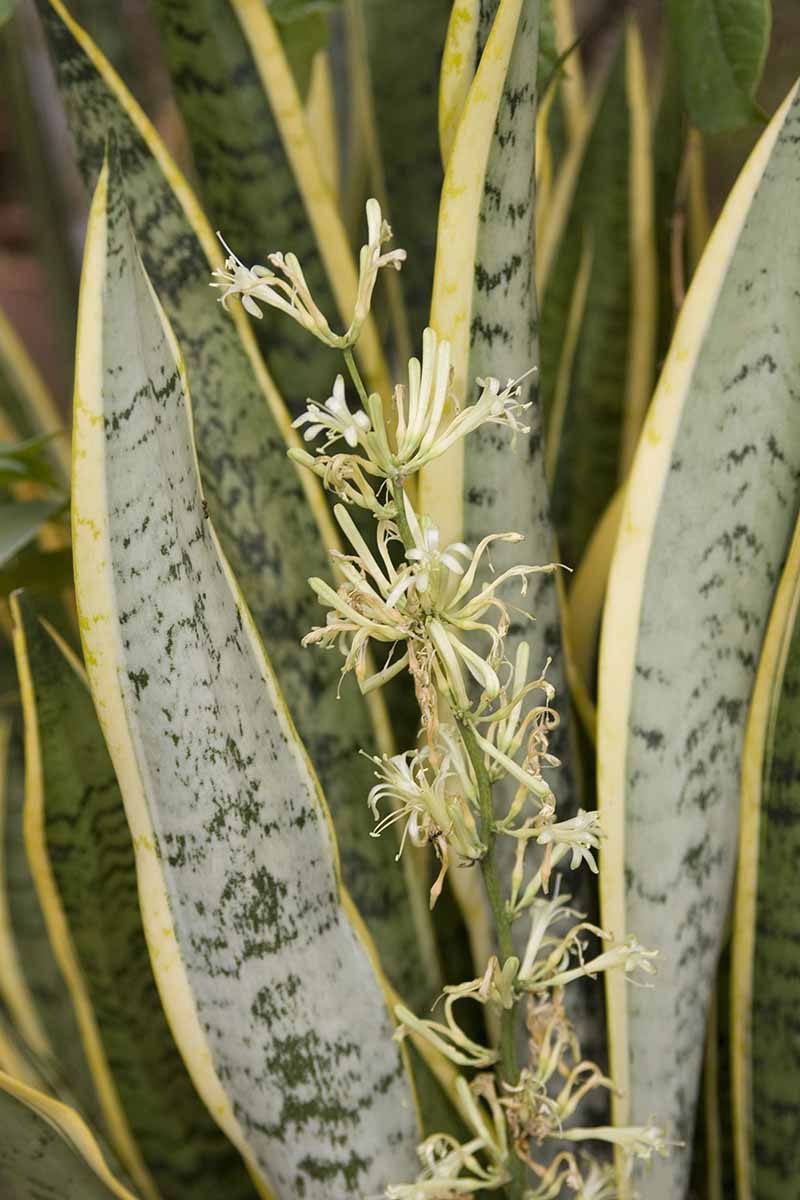
If pest control becomes necessary, some well-placed sticky stake traps will attract flying pests quite effectively – Safer Brand offers packs of seven-inch-tall traps on Amazon.
The flowers will typically be pollinated more readily outdoors with the help of certain insects, but hand-pollinating houseplants may be necessary if you want to see fruit.
Removing a flower or two and brushing the pollen-coated anthers against the pistils of other flowers on the same specimen should encourage fertilization.
Playing Marvin Gaye’s “Let’s Get It On” in the background is totally optional, but highly recommended.
When the blooms die back, cut the flower stalk off at the base with a sterilized set of pruners or scissors. Metabolic energy will be redirected towards new growth as a result, and you’ll have a tidier-looking plant to boot.
Make sure to clean up any dropped flowers or pollen to keep the area tidy. Sticky nectar may also drip onto leaves and surfaces – this can be wiped away as needed with a damp cloth.
Flowerful Growth = Powerful Grower
It’s true: gardeners who can stimulate floral growth in their mother-in-law’s tongue have strong plant skills.
Or maybe you just waited a bit long to repot, your snake plant caught some rays, and it’s decided to bloom on its own. Either way, feel free to pat yourself on the back! The tooting of your own horn is also acceptable.
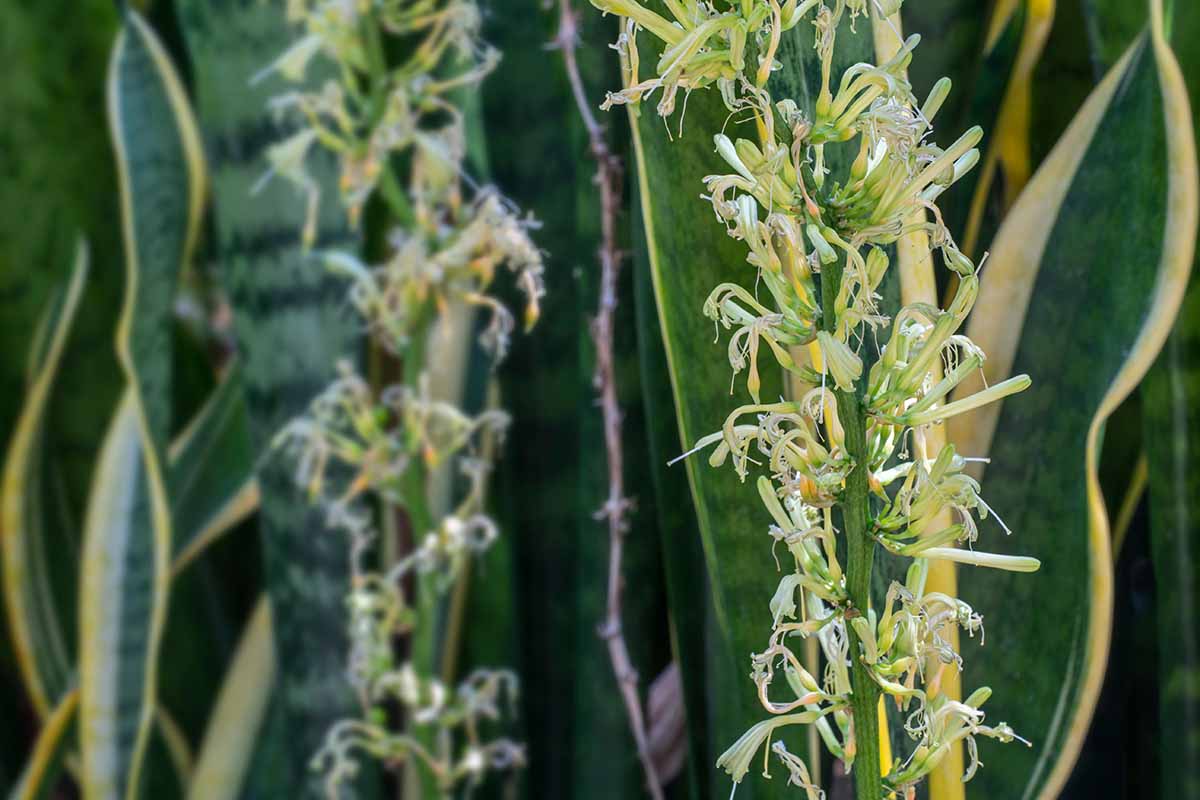
Whether you wanted flowers for their aesthetics or for their novelty, now you’ve got a handle on the process of forcing blooms!
Have fun perfecting your growing techniques, and don’t be shy in sharing your new capabilities with fellow gardeners who aren’t in the know yet.
Any questions about the process or personal insights in cultivating snake plant blossoms can go in the comments section below.
Have snake plants tickled your fancy? Read more about these plants and their other Dracaena relatives next:
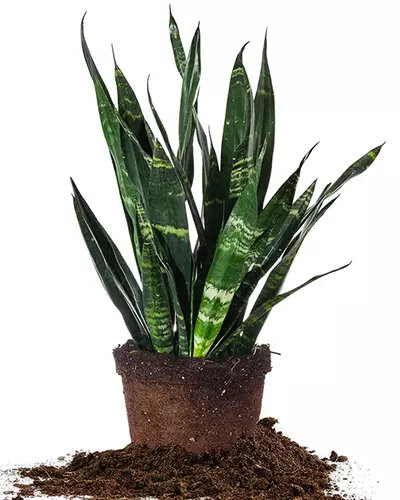
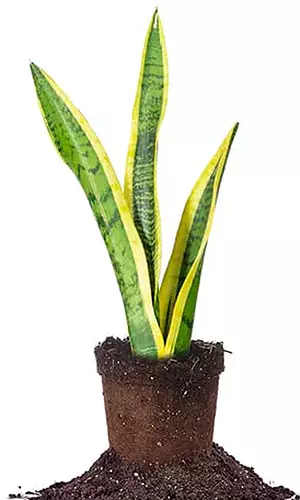
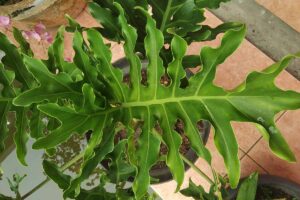

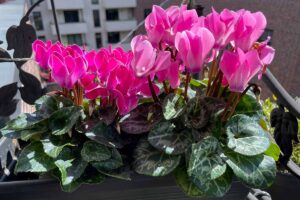
I’ve had mine 4 months, shocked me to see it blossom! Cornwall Ontario Canada!
Heck yeah! That’s what we like to see!
The fact is – this is happening strictly by chance! I’ll take it and have already whispered in my outside voice “holy smack your amazing” love talk 😉 Thank You for this wonderful article <3
Thanks for reading Lana!